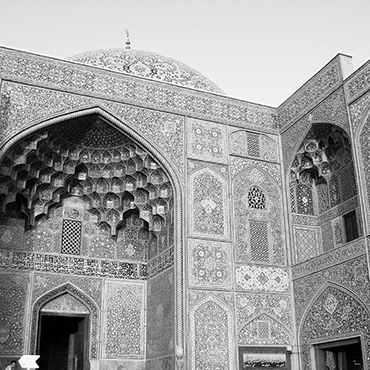SPECIAL ISSUE: IRAN'S ANTI-HIJAB PROTESTS
Since the death of a young Kurdish-Iranian woman named Mahsa Amini at the hands of regime security forces in mid-September, anti-hijab protests have swept over the Islamic Republic. These protests have both persisted and expanded, despite an increasingly draconian crackdown on the part of the Iranian regime. In the process, the Islamic Republic has been confronted with the most serious, sustained challenge to its legitimacy since the 1979 Revolution. In this issue of the Iran Democracy Monitor, we highlight some of the most significant developments to date in the unfolding struggle between the Iranian regime and its internal opposition.
THE BASIS FOR THE CRACKDOWN
While the current protests clearly took regime authorities by surprise at their outset, the groundwork for some sort of confrontation had actually been laid a month earlier. In mid-August, regime officials had unveiled a new plan to intensify their government's crackdown on women's dress. The decree on implementing new "Hijab and Chastity Regulations," signed into law by Iranian president Ebrahim Raisi and promulgated by the country's official Headquarters for Promoting Virtue and Preventing Vice, envisioned a range of stepped-up surveillance and enforcement of the country's restrictive religious dress code. This included the use of facial recognition technology on public transportation and surveillance in public spaces throughout the country to ensure that women were abiding by dress restrictions. (Guardian, September 5, 2022)
OFFICIAL CONSPIRACY THEORIES ABOUND
Who is responsible for Iran's unrest? To hear the country's Supreme Leader tell it, the current turmoil on the streets of Tehran and other cities is the fault of the West, namely the United States and Israel. In his first public comments on the protests in early October, Ali Khamenei termed Amini's death an "accident" that outside forces have attempted to exploit. "I say explicitly that these riots and this insecurity were a design by the US and the occupying, fake Zionist regime [Israel] and those who are paid by them, and some traitorous Iranians abroad helped them," Khamenei told security forces in Tehran. "In the accident that happened, a young woman passed away, which also pained us, but reactions to her death before investigations [take place] ... when some come to make the streets insecure, burn Qurans, take hijabs off covered women, and burn mosques and people's cars – they're not a normal, natural reaction." (Al Jazeera, October 3, 2022)
IRAN'S CLERICS CONTEMPLATE CUTTING THEIR LOSSES
The swelling unrest has clearly made Iran's clerical establishment nervous - so much so that some appear willing to throw the country's top religious leader under the bus in order to preserve the Islamic Republic's system of government. In late September, a group of seminary students and teachers released a statement disputing Supreme Leader Ali Khamenei's "Guardianship," citing the atrocities and crimes committed under his watch as the primary cause for their disillusionment. "As people who have spent their lives studying religion, we firmly and with full knowledge state that in this so-called Islamic government, none of the influential officials and authorities are mujtahids," the unsigned statement read, "[they cannot be a] source of emulation... or religious reference." (Iran International, September 30, 2022)
THE ETHNIC DIMENSION OF THE PROTESTS
While the current unrest in Iran has as its root cause the regime's draconian enforcement of hijab restrictions, the strife is being fueled by the deep divisions between ethnic groups within the Islamc Republic. "Perhaps the most important aspect to the current uprising is the major role played by Iran's ethnic minorities," writes scholar Brenda Shaffer in Foreign Policy. "According to BBC News, security forces have targeted and killed a disproportionate number of minority protesters, with a significant concentration of deaths in Baluchistan and the Caspian region in northwest Iran."
Moreover, Shaffer notes, the course of the current protests suggest that Iran's ethnic minorities are assuming an increasingly important role in resistance to the country's clerical regime. "Significantly, the current wave of anti-regime unrest is taking place in provinces that have rarely witnessed anti-government demonstrations since the consolidation of the Islamic revolution in the early 1980s. This includes not just Baluchistan on the Pakistani border, but the Caspian Sea provinces of Gilan, Mazandaran, and Golestan, where the dominant ethnic groups are Gilaks, Mazandaranis, and Turkmens, respectively." What might that mean? "In recent decades, the regime could count on the passivity of these provinces, even as anti-regime activity emerged in Tehran and other locations," Shaffer concludes. "Not this time." (Foreign Policy, October 19, 2022)
IRANIAN OFFICIALS EYE THE EXITS
As Iran's protest wave has deepened and expanded, regime officials have become increasingly nervous about their positions and status within the country. Iranian officials have reportedly begun seeking British passports for family members, and have charted as many as five flights a day to spirit relatives out of the Islamic Republic. Other reports indicate that regime functionaries are exploring the option of acquiring Canadian and Swiss documents as well. Iran International also cites unconfirmed reports that "officials are transferring their assets to friendly countries and... that many high-priced and luxurious real estates in the capital Tehran are being sold below market value." (Express, October 27, 2022; Iran International, October 30, 2022)

